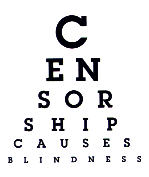Prudence is basically practical common sense. It's saying or doing the proper thing, at the proper time, and in the appropriate manner. It's also the ability to know and judge whether to say something or do nothing at all...Recommended reading: Back to Virtue by Peter Kreeft. He examines the virtues in depth and also looks specific virtues and Beatitudes as antidotes to each of the seven deadly sins. Not a new concept but one that he writes about superbly (as always).
Prudence takes time and practice, In the olden days, when good manners were more important than income, portfolio, or net worth, noblemen and peasants alike strove to show respect for their fellow man through the practice of prudent speech. Today, manners come in two extremes: The politically correct fear of offending anyone and saying nothing controversial -- even when someone is in danger, and alternatively, the shock-jocks who bluntly bludgeon you over the head with the raw, unadulterated truth, hoping to hurt your feelings and get a violent reaction rather than help you. Prudence, on the other hand, is in the middle of the two extremes. Prudent people speak the truth when needed and appropriate and in a way that doesn't offend, but they never lose their force and conviction.
Acting prudently requires mature deliberation [thinking carefully before acting or not acting], wise choice [determining which option is feasible and appropriate], and the right execution [swiftly and thoroughly follow through without procrastination and haste].Catholicism For Dummies by John Trigilio
Father Stephanos adds:
Of those for "hinge" or "pivotal" virtues, the one that is the "coordinator" of all other virtues is the virtue of prudence.Good stuff, eh?
Prudence even governs our exercise of charity.
CATECHISM OF THE CATHOLIC CHURCH:
1806 Prudence is the virtue that disposes practical reason to discern our true good in every circumstance and to choose the right means of achieving it; "the prudent man looks where he is going." "Keep sane and sober for your prayers." Prudence is "right reason in action," writes St. Thomas Aquinas, following Aristotle. It is not to be confused with timidity or fear, nor with duplicity or dissimulation. It is called "auriga virtutum" (the charioteer of the virtues); it guides the other virtues by setting rule and measure. It is prudence that immediately guides the judgment of conscience. The prudent man determines and directs his conduct in accordance with this judgment. With the help of this virtue we apply moral principles to particular cases without error and overcome doubts about the good to achieve and the evil to avoid.
Next up: Justice.
Tags: Catholicism, Christianity



